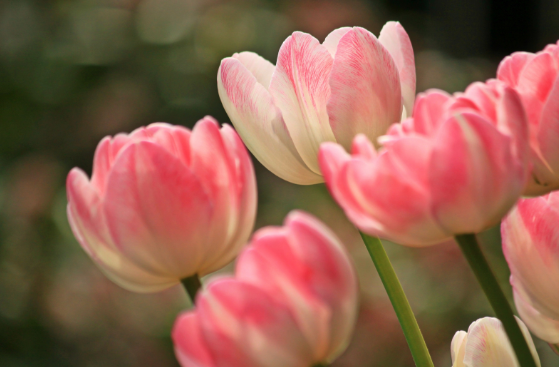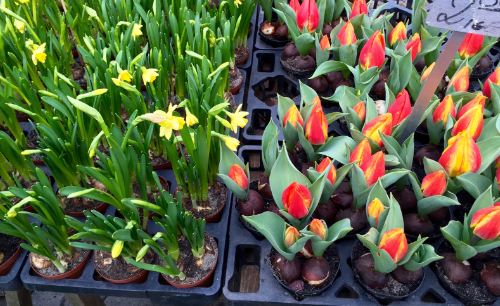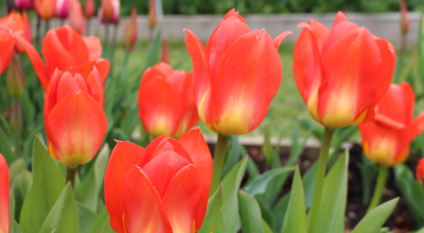Learn how to plant, grow, and care for stunning Fosteriana tulips in your garden. Discover expert tips for planting, watering, and maintaining these beautiful spring-blooming bulbs for a vibrant, healthy garden.

Introduction:
Tulips are a beloved spring flower, renowned for their vibrant colors and elegant blooms. Among the many types of tulips, Fosteriana tulips stand out for their large flowers, early bloom time, and unique beauty. Whether you are an experienced gardener or a beginner, growing these stunning tulips is a rewarding experience. In this guide, we will explore everything you need to know about planting, growing, and caring for Fosteriana tulips to ensure they thrive in your garden.
What Are Fosteriana Tulips?

Fosteriana tulips are among the largest and earliest blooming tulips, with flowers that can reach 5-10 inches in diameter. Known for their vibrant hues of red, orange, yellow, and pink, these bulbs stand tall and make a statement in any garden. They are an excellent choice for spring gardens, providing an early burst of color while pairing beautifully with daffodils and hyacinths.
Want more gardening tips? Sign up for our free gardening newsletter for our best-growing tips, troubleshooting hacks, and more!
Fosteriana Tulip Characteristics
- Height: 10-24 inches
- Bloom Color: Pink, red, orange, yellow, and cream
- Bloom Time: Early spring
- Hardiness Zone: 3-8
- Sun Exposure: Full sun
- Soil: Well-drained, fertile, loamy soil
These tulips are resilient, reliable perennials, making them ideal for both experienced and novice gardeners. With proper care, they will return year after year, adding beauty and color to your landscape.

Planting Fosteriana Tulips:
For the best results, plant Fosteriana tulips in the fall. These bulbs require a cold period to bloom successfully, so it’s important to plant them before the first frost. Here’s how to plant them:
- Choose a sunny spot with well-draining soil.
- Dig holes about 5 inches deep for each bulb.
- Place the bulbs with the flat end down (pointed end up).
- Backfill the hole with soil and cover with mulch to protect them during winter.
- Water lightly until the ground freezes.
Planting at the right time ensures strong root development and vibrant blooms the following spring.
Read more about other articles as well at petalwhirl.com
How to Grow Fosteriana Tulips:
Once planted, Fosteriana tulips are relatively low-maintenance. However, they do require proper conditions to thrive:
- Light: Choose a spot with at least 6 hours of sunlight per day. Morning sun is ideal, as it’s cooler and better for these cool-weather plants.
- Watering: Keep the soil moist but not soggy. Water regularly after planting in the fall to help roots develop, but stop watering once the ground freezes. In spring, only water if rainfall is insufficient.
- Soil: Tulips prefer well-draining, slightly acidic soil. You can amend heavy soil with organic matter such as compost to improve drainage.
Care and Maintenance:
To keep your Fosteriana tulips healthy and vibrant:
- Mulching: Apply a thick layer of mulch after planting. This will help retain moisture and regulate soil temperature.
- Deadheading: After the tulips bloom, cut off the spent flowers to redirect energy back into the bulb. Leave the leaves intact until they turn brown, then cut them back.
- Fertilizing: Fertilize with a balanced 10-10-10 fertilizer in early spring as the tulips begin to sprout, encouraging both foliage growth and flower development.
Common Problems and Solutions:
Although Fosteriana tulips are relatively easy to grow, they can sometimes face a few challenges:
- Pests: Aphids, snails, and slugs may damage the leaves and stems. Use organic remedies like neem oil to control aphid infestations.
- Diseases: Fungal infections like tulip fire or tulip-breaking virus can affect the plants. If you notice unusual discoloration, remove the affected plants immediately to prevent the spread.
Fosteriana Tulip Propagation:

If you’d like to grow more Fosteriana tulips, the best method is through bulb division rather than seeds. Dividing bulbs every 3-4 years will help keep your tulips healthy and encourage new growth. After blooming, gently dig up the bulbs, separate the offsets (small bulbs that form around the main bulb), and store them in a cool, dry place until fall. Replant the bulbs the following season for new flowers.
Popular Fosteriana Tulip Varieties:
Some well-known varieties of Fosteriana tulips include:


- ‘Exotic Emperor’: Cream-colored blooms with a golden base and green tips.
- ‘Red Emperor’: Bold red flowers with a black center, great for cut flowers.
- ‘Oracle’: A vibrant mix of gold and red, perfect for mass plantings.
These varieties, along with others, offer a variety of stunning color combinations to brighten your garden.
Conclusion:
With their large, colorful blooms and reliable perennial nature, Fosteriana tulips are a fantastic addition to any garden. By following the planting, care, and maintenance tips outlined in this guide, you can enjoy a vibrant display of tulips every spring. Whether you plant them for their beauty, symbolism, or as part of a larger floral arrangement, these early-blooming tulips will be a source of joy and admiration in your garden for years to come.
Frequently Asked Questions
What can you plant them with?
Plant these in with daffodils, hyacinths, and other shorter bulbous perennials. They stand tall and make a statement in a mix of flowers.
Are they safe for pets?
No, Tulip bulbs are very poisonous to humans and pets. These aren’t great for a yard with a dog that digs.
Why is my plant wilting?
Too much heat is the probably culprit. Underwatering is usually not as detrimental.
Read more articles for house plants care at petalwhirl.com

1 thought on “How to Plant, Grow & Care for Fosteriana Tulips | Expert Tips”